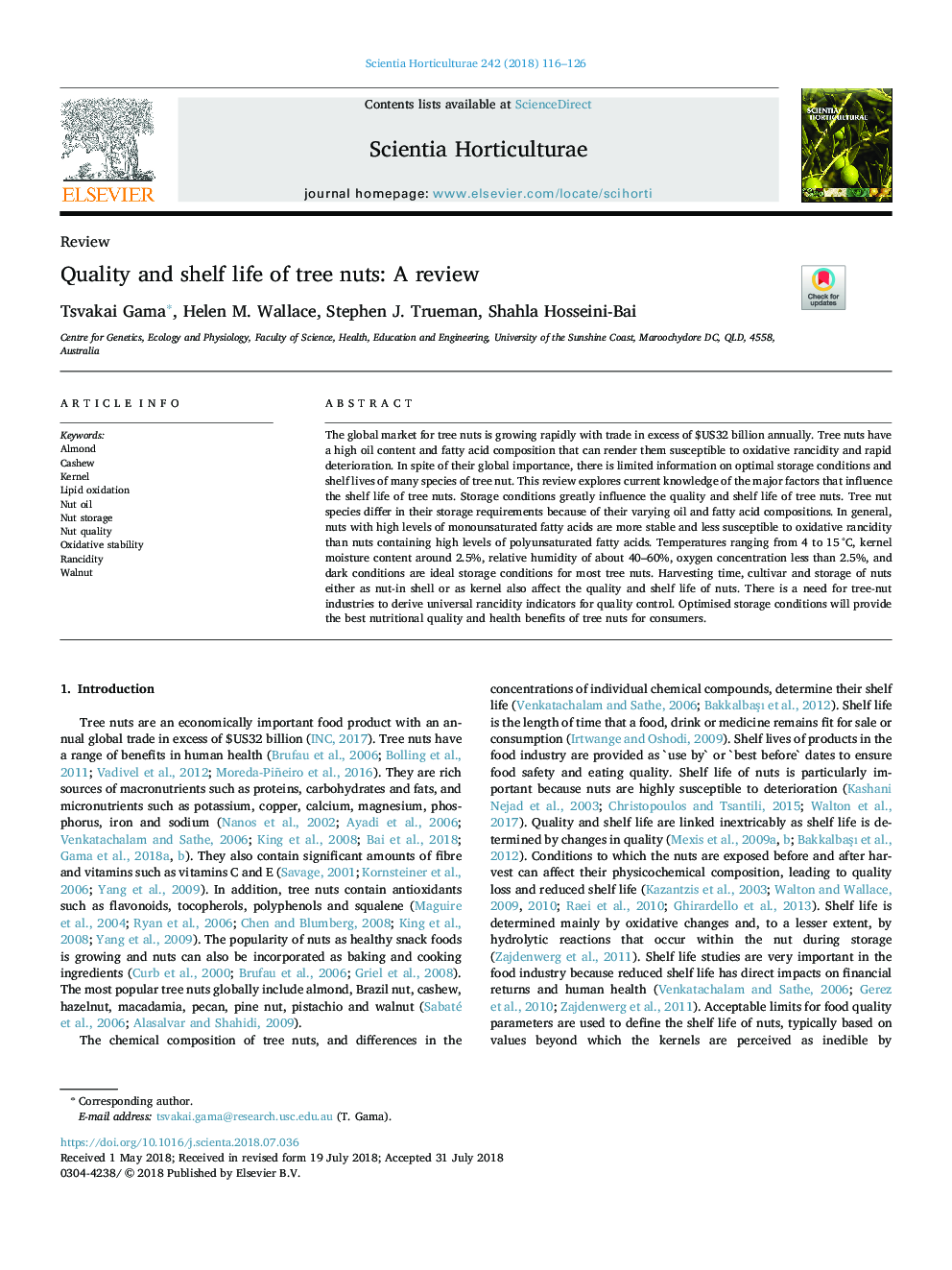| Article ID | Journal | Published Year | Pages | File Type |
|---|---|---|---|---|
| 8892306 | Scientia Horticulturae | 2018 | 11 Pages |
Abstract
The global market for tree nuts is growing rapidly with trade in excess of $US32 billion annually. Tree nuts have a high oil content and fatty acid composition that can render them susceptible to oxidative rancidity and rapid deterioration. In spite of their global importance, there is limited information on optimal storage conditions and shelf lives of many species of tree nut. This review explores current knowledge of the major factors that influence the shelf life of tree nuts. Storage conditions greatly influence the quality and shelf life of tree nuts. Tree nut species differ in their storage requirements because of their varying oil and fatty acid compositions. In general, nuts with high levels of monounsaturated fatty acids are more stable and less susceptible to oxidative rancidity than nuts containing high levels of polyunsaturated fatty acids. Temperatures ranging from 4 to 15â°C, kernel moisture content around 2.5%, relative humidity of about 40-60%, oxygen concentration less than 2.5%, and dark conditions are ideal storage conditions for most tree nuts. Harvesting time, cultivar and storage of nuts either as nut-in shell or as kernel also affect the quality and shelf life of nuts. There is a need for tree-nut industries to derive universal rancidity indicators for quality control. Optimised storage conditions will provide the best nutritional quality and health benefits of tree nuts for consumers.
Related Topics
Life Sciences
Agricultural and Biological Sciences
Horticulture
Authors
Tsvakai Gama, Helen M. Wallace, Stephen J. Trueman, Shahla Hosseini-Bai,
